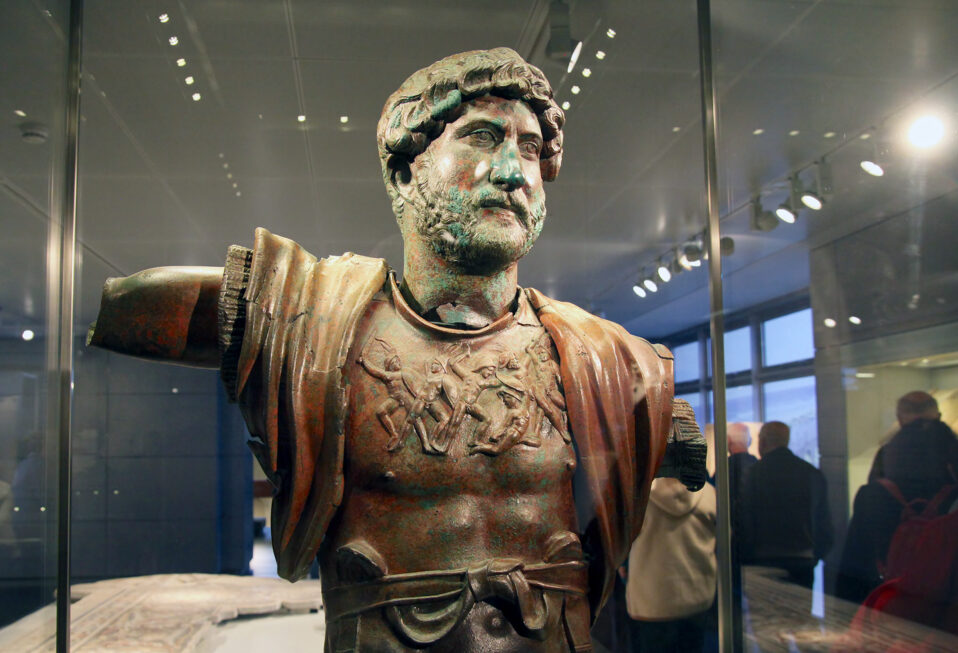Hope stirred within Judaism sixty years after the fall of Jerusalem and the destruction of its Temple. Perhaps this was the time when the Jews in the land of Israel would finally remove Rome’s presence. The revolt broke out in A.D. 132. The Bar Kochba Revolt lacks the eyewitness accounts, like Josephus, who chronicled the First Jewish Revolt against Rome (A.D. 66-73).
The causes of the revolt are not entirely clear. Several factors seem to have contributed to a second Jewish revolt in the land of Israel within a sixty-year period. The Roman Emperor Hadrian banned circumcision in the year’s leading up to the revolt. His ban against circumcision grew out of a general ban against male castration. Romans viewed the Jewish practice of circumcision as mutilation. Of course, circumcision was the sign of the covenant between God and Abraham’s descendants (Genesis 17).
The ancient sources disagree whether Hadrian refounded Jerusalem as a Roman colony, named Aelia Capitonlina, with a Temple to Jupiter, before or after the Bar Kochba Revolt. If it happened prior to the revolt, it may have served as a cause of the revolt.
The Jews seem to have assumed this period would see the Temple of Jerusalem rebuilt. After the destruction of the First Temple, the Temple of Solomon, the Second Temple was built by Zerubbabel in Jerusalem. The Jews looked at this earlier precedent as a pattern for God bringing about the rebuilding of the Temple in their day. Some of the coins minted by the Jewish rebels depict the façade of the Temple. Others bear the inscription “for the redemption of Jerusalem.” The Jewish rebels anticipated their revolt would return Jerusalem to the Jews, remove the Romans, and see the Temple rebuilt.
The revolt receives its name from its leader, a charismatic, messianic figure named, Shimon ben Kosiba. Rabbinic tradition relates how a great Sage of this period, Rabbi Akiva, hailed Shimon as the Messiah, calling him bar Kochba (“son of the star;” Numbers 24:17). After the failure of the revolt, the rabbis referred to him as bar Koziba (“son of the lie”). Shimon took the title Nasi Israel (Prince of Israel). This language comes from Ezekiel where the future, hoped for ruler will be known as Nasi.
The revolt had a devastating impact upon the Jewish community in the land of Israel. Roman, Jewish, and Christian sources place the Jewish casualties between 400,000-500,000. Even if these figures are inflated, they speak to the widespread loss of Jewish life. The Jewish rebels also inflicted heavy causalities upon the Roman forces as well. Many Jews were sold as slaves because of the revolt. Others emigrated outside of the land. Jews from Babylon immigrated into the land of Israel at this time.
The Romans changed the name of the province from Judaea to Palestina. Jerusalem became a Roman colony and Jews were expelled from the city. The Galilee, which had been a center of Jewish life, had idolatrous non-Jews settling in the region. It also impacted the relationships between Jews and Christians.
Marc Turnage is President/CEO of Biblical Expeditions. He is an authority on ancient Judaism and Christian origins. He has published widely for both academic and popular audiences. His most recent book, Windows into the Bible, was named by Outreach Magazine as one of its top 100 Christian living resources. Marc is a widely sought-after speaker and a gifted teacher. He has been guiding groups to the lands of the Bible—Israel, Jordan, Egypt, Turkey, Greece, and Italy—for over twenty years.
Website: WITBUniversity.com
Facebook: @witbuniversity
Podcast: Windows into the Bible Podcast




Post a comment